Living L.A.’s dolce vita
April 18, 2012
Los Angeles is well-established as a world leader in entertainment. But it’s also a leader in something else people can’t get enough of—leisure.
Author Lawrence Culver has traced the history of leisure in L.A. from the 19th Century to the end of the 20th Century, and he’s coming to Santa Monica Central Library for a presentation on his book, “The Frontier of Leisure,” this Sunday, April 22.
This free presentation will focus on how the importance of leisure in Southern California architecture and culture became a bellwether for the rest of the United States. With an average of 325 sunny or partly sunny days a year, that means a lot of outdoor time, and that’s reflected in the region’s backyard pools, ranch houses and resorts. A book signing will follow the discussion.
The presentation is sponsored by the Society of Architectural Historians Southern California Chapter, a nonprofit organization dedicated to sharing the architectural heritage of the region.
The event takes place from 2 p.m. to 4 p.m. in the Martin Luther King, Jr., Auditorium of the Santa Monica Central Library, 601 Santa Monica Boulevard. Seating is available on a first come, first served basis.
Posted 4/18/12
Finally, “The Rock” meets the road
February 29, 2012

The Rock begins its nine-day journey to LACMA, where it will be used in Michael Heizer's "Levitated Mass."
With a round of applause and two mighty blasts of a truck horn, The Rock finally hit the road at 10:37 p.m. on Tuesday in what may be the most talked about slow-speed odyssey since O.J. Simpson’s Bronco snaked through the Southland’s streets.
The 340-ton boulder that is the centerpiece of “Levitated Mass,” Michael Heizer’s new LACMA installation took seven minutes just to make it out of the Stone Valley Materials Inc. quarry in Riverside County.
A crowd of several hundred cheered and shivered as the behemoth began its epic journey. Covered in white shrink-wrap to ward off taggers, it rode on a massive red transporter and looked, under the vehicle’s bright lights, like a well-lit iceberg.
“This is a once in a lifetime experience, to see something like this,” said Stan Ortman of Chino Hills, who spotted the boulder on his way home from work and stopped. “This has been here for like 20,000 years, and now it’s art.”
The Rock, as it affectionately came to be known, has been waiting for what seems like eons to head out to LACMA, where it will be positioned over a concrete trench in a manner that will make it look as if it is levitating.
That Thursday night’s festive send-off even happened is a bureaucratic miracle of sorts. Although millions of dollars in transportation costs are being underwritten by corporate donor Hanjin Shipping, the move required delicate and sometimes contentious negotiations with 22 cities and four counties. As early as Tuesday morning, some municipalities were still demanding various concessions from the museum in exchange for permits.
For the next nine days, The Rock will be cradled on its 299-foot-long, 27-foot-wide steel carriage as it travels on surface streets at speeds of less than 5 mph. Crews of workers will rush ahead to make sure utility and power lines are kept clear.
The Rock reached its first stop before dawn at a wide-open strip of private property at Mission Boulevard and Bellegrave Avenue in Glen Avon. It will spend all of Wednesday there before setting off in darkness on its next leg, which, if all goes according to plan, will get it as far as Mission Boulevard and Grove Avenue, near LA/Ontario International Airport.
(For a full LACMA “Gawker’s Guide” to The Rock’s trip, click here.)
On Tuesday night, several hundred people came by during the evening to bid The Rock bon voyage, including LACMA Director Michael Govan, Supervisor Zev Yaroslavsky, Jurupa Valley Mayor Laura Roughton, and Dan Johnston, who, as project manager for the quarry’s former owner, sold the boulder to Heizer.
Govan said that, when Heizer first set eyes on granite boulder, which had been dynamited from the side of the mountain, “he called me… and said it was the most beautiful rock he’d ever seen.”
Although Heizer, who is famously reclusive, was not in attendance Tuesday, Govan said he’d seen him earlier in the day at the artist’s home in Nevada. “He said there was nothing he could do to help move the rock,” Govan explained, “so he wouldn’t be here. But he’s excited. When we first started this, we weren’t sure it would actually happen. The engineering, the organization, all the permissions—there were a lot of doubters. But now it’s happening, and it’s going to be a real gift to the public. It’s going to be great.”
The crowd tended to agree.
Daniel Ponti, a Glen Avon photographer, said he had been “waitin’ months for that darn thing to move,” and checking its progress daily. Saul Gomez, 14, of Sunnyslope, said his father had alerted him to The Rock’s presence and sent him to look with his mom and his sister Samantha. “I’ve never seen anything like it,” the boy said. “It’s huge!”
Others were as amused as they were awestruck.
“Pretty big rock, huh?” observed Dave Sharp of nearby East Highland, a union employee whose wife, Leslie Hubbs, said she was the niece of the quarry’s former owner. “I think it’s crazy. It’s great, but it’s nuts.”
Stephen Vander Hart, the quarry’s current owner, said the boulder had been loaded since December and ready to roll since Saturday morning. All week, he said, bystanders had been coming by to check it out.
As the sun set Tuesday, commuters and neighbors gathered to pose with the boulder and buy Southern-style barbecue from an enterprising local chef. “We’re re gonna miss it,” said Vander Hart. “It’s pretty impressive. I think people are gonna get a kick out of seeing it out there on the road.”
The Rock will travel only at night. In addition to the first two stops in Riverside County, it will stop in Diamond Bar, Rowland Heights (it will be across the street from Pathfinder Community Regional Park both Saturday and Sunday), La Mirada, Lakewood, Long Beach’s Bixby Knolls neighborhood, Carson, and Los Angeles (near Exposition Park).
It will rest during the day and arrive at LACMA on Friday sometime before dawn. There, it will be positioned over the other half of Heizer’s artwork—a massive concrete trench on the Resnick Pavilion lawn.
Posted 2/29/12
Performing with surgical precision
February 23, 2012
Child prodigies of the Westside are teaming up with local doctors, but no need to worry—they’ll be performing Mozart, not open-heart surgery.
The Los Angeles Doctors Symphony Orchestra will play two all-Mozart concerts this weekend featuring the six winners of the Westside Music Foundation’s Robert Turner Piano Concerto Competition, an annual contest for kids ages 8 to 18.
The first three winners—Grace Kim, 16, Camille Ida Camacho De Beus, 15 and Eric Lin, 16—will play the Grand Lounge of the Ebell of Los Angeles at 743 South Lucerne Boulevard. The concert takes place Friday, February 24, at 8 p.m. Each student winner will perform one movement of Piano Concerto No. 8 in C Major, K. 246.
The other winners—Tristan Pardee, 11, Averi Suk, 11 and Serena Wang, 12—will perform movements of Piano Concerto No. 8 in C Major, K. 246 at Plummer Park’s Fiesta Hall in West Hollywood on Sunday, February 26. Concert time is 2 p.m. to give everyone a chance to get home for the Oscars.
Both concerts are $15 for adults, $10 for seniors and free for kids under 12.
The Doctors Symphony Orchestra is a health industry-based community orchestra that dates back to 1953. These days, not all members are actual doctors (though many are.) The organization raises money for medical charities by performing affordable concerts across Los Angeles County.
Posted 2/23/12
A boatload of homeland security
January 10, 2012

Sheriff's officials are hoping to soon have a second terrorist-fighting boat patroling the waters off L.A. County.
Its crews have secured evidence from offshore pot busts. Its advanced sonar helped locate wreckage from a mid-air plane crash off the coast three years ago.
But mostly the Ocean Rescue II spends its days scanning for a threat that its crew hopes will never appear on any law enforcement blotter: the possibility that weapons of mass destruction might be smuggled into the massive Port of Los Angeles.
“This boat essentially provides homeland security for the entire L.A.County coast,” says Los Angeles County Sheriff’s Lt. Jack Ewell, who has worked on the 55-foot-long, super-high-tech vessel since its deployment in the port three years ago.
Paid for with a $2.25 million federal grant from the Department of Homeland Security and operated by a rotating 3-man crew from the sheriff’s special enforcement bureau, the Ocean Rescue II can scan ship hulls for traces of biological, radiological, chemical and nuclear weapons and can transmit the data to onshore labs in real time. Its sonar sees threats in the murkiest waters; its remote underwater vehicle can pluck bombs from ship bottoms and retrieve evidence 3,000 feet underwater.
“It’s pretty unique,” says David Gutierrez, vice-president of manufacturing at Willard Marine in Anaheim, which custom-built the vessel for the Sheriff’s Department. “It looks like just a standard boat with a lot of bells and whistles, but it’s a very important piece of equipment at the port.”
But the combination of all that technology and salt air is an ongoing issue: “You have to keep it painted, maintain the engines—to keep a boat like that working 7 days a week requires a lot of maintenance,” Ewell says.
“It’s like a patrol car,” agrees Gutierrez. “It has to always be ready to go.”
This, Ewell says, is why the sheriff hopes to bring in a backup with the help of a $3 million federal grant won by the department last year.
“A second boat will give us the capability to rotate vessels, or to have two boats in the water at the same time,” Ewell says.
It also will add to the sheriff’s already impressive counter-terrorism arsenal, which includes a radiation-detecting helicopter and a biological- and chemical-weapon-sniffing Labrador named Johnny Ringo.
At least eight of the 34 boats in the sheriff’s department fleet are assigned to the Special Enforcement Bureau, which includes the Homeland Security Division where Ewell works. Another dozen—including an offshore vessel with nuclear detection capabilities—patrol out of Marina del Rey or Catalina Island.
Backing them up, of course, are maritime forces from the U.S. Coast Guard as well as port-stationed boats manned by the Long Beach police, the Port of Los Angeles police and other law enforcement agencies.
The stakes are high, Ewell explains.
“It’s been estimated that an incident that shut down the port here would cost theU.S.economy $2 billion a day,” he says. “Forty percent of the nation’s imports come through here, and our coastal region is heavily populated. It would devastate the region if anything were to affect the port.”
So far, Ewell says, the boat’s daily scanning hasn’t uncovered any dirty bombs. (“Believe me, you’d know it if they did.”)
But it has been put to other uses. In April 2010, for instance, the sheriff’s department used it to help secure a large cache of marijuana from an isolated cove on Catalina Island where a smuggler’s boat had been stranded.
And in 2009, when two private planes collided in mid-air off the coast of Long Beach, Ewell says, “the boat was used for two weeks straight to recover parts of the planes, and to find the victims and return the remains to their families.”
The second boat, if authorized next week by the Board of Supervisors, would similarly do double duty, Ewell says. Like Ocean Rescue II, it is expected to be equipped with advanced life support equipment, and to be set up for large-scale diver operations.
“We’ll use it on medical emergencies, criminal investigations, plane crashes,” he says. “The way budgets are these days, you have to get a lot of bang from the buck.”
Posted 1/10/12
Giving back on Thanksgiving
November 22, 2011
If you think preparing Thanksgiving dinner for your family is tough, try cooking for 2,500. A large and diverse group of volunteers will do just that at the Westside Thanksgiving Community Dinner and Celebration, where all are invited to belly up to a communal feast. As the name implies, this event involves more than just food. Free medical consultations, children’s immunizations, clothing distribution, haircuts and eye exams will all be offered to seniors, students, low-income families and the homeless. A carnival with games, arts and crafts will make sure little ones stay entertained.
It’s all made possible by donations and volunteers. Many have signed up already—so many, in fact, that if you want to pitch in you’ll probably have to wait in line. The event still needs turkeys, though, so the best way to help probably involves dropping off a fully-cooked bird between 9 a.m. and 11 a.m.
The Thanksgiving Day event takes place on Thursday, November 24, at Santa Monica Civic Auditorium, 1855 Main St. It starts at 8 a.m. and dinner will be served from 11 a.m. to 3 p.m. See the website’s frequently asked questions section for more details.
Those looking for another way to contribute to a worthy cause might consider joining a Thanksgiving Day bike ride benefiting Meals on Wheels. Riders gather at 7:45 a.m. in Brentwood, and go as far as 50 miles roundtrip, but you can join in progress if you’d like to sleep more, or pedal less. More route details are here.
However you may choose to give back, please remember that the need for food, supplies and volunteers isn’t limited to the holiday season. Harsh economic times mean more demand and fewer donations, so year-round help is more important than ever. Westside Food Bank, Valley Food Bank, Los Angeles Regional Food Bank and other charities stand ready to gather and distribute supplies. Donations of goods, money or time can go a long way toward helping those who need it most.
Posted 11/22/11
Audit reveals flaws in children’s agency
October 26, 2011
 More than a dozen years ago, California voters, by the slimmest of margins, passed a measure championed by actor/director Rob Reiner imposing a 50-cents-per-pack tax on cigarettes to infuse huge sums into programs aimed at lifting the lives of children 5 and under.
More than a dozen years ago, California voters, by the slimmest of margins, passed a measure championed by actor/director Rob Reiner imposing a 50-cents-per-pack tax on cigarettes to infuse huge sums into programs aimed at lifting the lives of children 5 and under.
“This is a sweet victory,” Reiner elatedly proclaimed after a final tally of absentee ballots had given his Proposition 10 the edge. “It means so much for the young children of this state…”
But this week in Los Angeles, the mood was far more somber as the Board of Supervisors received a highly critical audit of how hundreds of millions of dollars of that money has been administered locally by an independent public agency called First 5 LA.
Although no malfeasance was uncovered, the board was so concerned about the findings that, by a 4-1 vote, it set in motion a plan to strip First 5 LA of its independence and turn it into a county agency, like the majority of its companion organizations across the state.
The audit, requested by Supervisor Michael D. Antonovich, who’s currently serving as chairman of the First 5 LA commission, was performed by Harvey M. Rose Associates and bluntly details a series of risks that the firm says may be undermining the performance and integrity of First 5 LA. Among the findings:
- First 5 LA has been significantly under-spending its revenues, placing the organization “at risk of not fulfilling its mission and goals to the extent possible and consistent with the Board of Commissioners policy and program objectives.” With a fund balance of more than $800 million, the organization has spent comparatively less on its programs than California’s other First 5 groups.
- The First 5 commission receives such insufficient information from the organization’s staff that its ability to oversee spending, program activity and outcomes is compromised. “Most grant and contract awards, representing hundreds of millions of dollars of annual agency expenditures, are not submitted for approval or review.”
- In the last fiscal year, the agency awarded more than $200 million in contracts, but failed to report them all to the First 5 commissioners, which “raises the risk of agreements being in place for inappropriate purposes or with unqualified vendors or grantees.” In fact, the commission approved only 28% of First 5 LA contract awards. In many cases, contracts were awarded without competitive bidding—and without notifying the commission. Auditors could not determine how some contracts were awarded because documentation was not properly retained.
- The staffing of First 5 LA is high compared to other First 5 agencies and is “not configured to best enable development and administration of new programs and initiatives,” thus contributing to the under-spending problem and delays in launching health, safety and educational programs for the county’s children.
- During the past four fiscal years, First 5 LA has had an annual staff turnover rate ranging from 8 to 19 percent a year, generally higher than other First 5 organizations surveyed by the auditors. This, along with the absence of a commission-approved compensation policy, “raises the risk of First 5 LA not being able to attract and retrain qualified, high-performing employees.”
After the audit findings were presented during Tuesday’s Board of Supervisors meeting, Supervisor Zev Yaroslavsky offered a particularly blunt assessment.
“The lack of transparency, the lack of accountability, the lack of competition in proposals, the lack of information sharing between the staff and the commission itself, any one of these things would be a bell and whistle. And all of them together is a siren,” said Yaroslavsky, who praised Antonovich for initiating the audit process.
No representatives from First 5 LA testified during Tuesday’s session. But the organization’s chief executive officer, Evelyn V. Martinez, later released a statement noting that, since 1998, First 5 LA has undergone annual independent audits of its financial statements and controls “and at no time have these audits resulted in any material findings.”
First 5 LA, she said, “takes its fiduciary responsibilities seriously and has been a responsible caretaker of the public funds entrusted to it.” While acknowledging the Board of Supervisors’ authority to exert greater control over the organization, Martinez said that “I hope we can continue to maintain our focus on improving the lives of our youngest children in Los Angeles County.”
Among chief executives of First 5 commissions in California’s 58 counties, Martinez’ annual compensation of nearly $250,000 in 2009-2010 topped the list. That included a $10,000 performance bonus.
Supervisor Gloria Molina cast the sole vote against the motion authored by Antonovich and Supervisor Mark Ridley-Thomas, which directs the county counsel and chief executive officer to prepare a proposed ordinance establishing First 5 LA as a county agency and report back within 30 days.
“I don’t see where one dollar was stolen, one dollar was misappropriated, one dollar was mishandled,” said Molina, who was chair of the First 5 LA commission during some of the audited period. (That position is held by the sitting chairman of the Board of Supervisors, a position that rotates annually. Each supervisor also appoints a member to the commission.)
Molina added: “I think it’s a shame that we are moving so drastically to take over this agency.”
The audit process began earlier this year when the governor proposed diverting half of the current and future Proposition 10 tobacco-tax money from the county commissions established to administer it. For First 5 LA, according to the Antonovich/Ridley-Thomas motion, this would divert about $450 million from its current reserves and $50 million annually in the future.
The audit, conducted in two phases, initially was intended to identify First 5 LA’s reserves and ensure the most efficient use of future allocations. But, in the end, serious issues were uncovered that led to Tuesday’s vote.
The First 5 commissions have sued the state to block diversion of funds. The case is pending.
Posted 10/26/11
A hearing—and a civics lesson, too
September 27, 2011
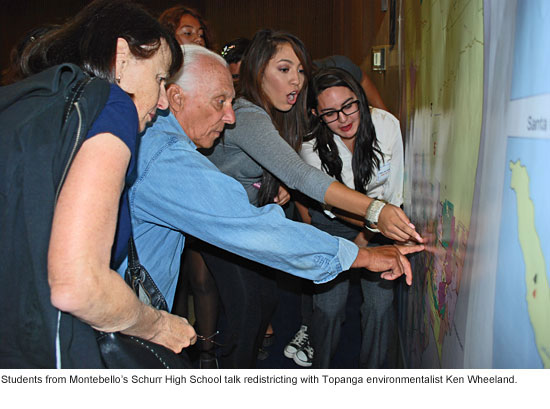 Hilda Placencia got a lesson in the complexities of political representation. Jesse Almaraz learned that government isn’t necessarily dull. Christopher Trujillo discovered that, when it comes to civic engagement, it helps to be a morning person.
Hilda Placencia got a lesson in the complexities of political representation. Jesse Almaraz learned that government isn’t necessarily dull. Christopher Trujillo discovered that, when it comes to civic engagement, it helps to be a morning person.
“We were the first ones into the building,” the 18-year-old El Monte student noted, planting himself in a choice seat in the Kenneth Hahn Hall of Administration. “But we had to be ready to go at 5:45 a.m.”
Tuesday’s public hearing on redistricting was many things to many people—a referendum on social justice, a call for a geographic balance of power, a refresher course on Los Angeles County’s shifting demography.
But for hundreds of adolescents packed into the audience—some bused in by community organizers, some carpooled in with their high school teachers—the marathon meeting was a daylong civics lesson.
“My teacher explained it to us, but this is explaining it better,” said Placencia, a 16-year-old senior (“Class of 2012!”) who was part of a contingent from Schurr High School in Montebello. “I learned more today here at this meeting than I did all day yesterday.”
More than 900 people showed up in the early morning to applaud, testify and otherwise weigh in on three rival plans for redrawing the county’s supervisorial boundaries. By the time the Board of Supervisors voted to adopt an amended version of plan A3, which mostly follows the current boundaries, it was dinner time.
But one of the most striking aspects of the crowd was its youth.
One section was packed with row upon row of students bused in from job training programs in Supervisor Don Knabe’s Fourth District. Another was filled with 50 blue-shirted teenagers and young adults who came from the San Gabriel Valley Conservation Corps in Supervisor Gloria Molina’s First District in a convoy of vans.
A classroom of students from Bell Gardens High School, escorted by Molina staff members, shuttled in and out, politely observing until mid-afternoon, when their school day ended; later, the supervisor—whose own Latino-majority district had been created as the result of a redistricting lawsuit—clambered onto a Roosevelt High School bus to thank still more young people for coming.
Teenagers being teenagers, of course, few could name their supervisors—a problem that afflicts some adults as well. But that didn’t dampen their interest. At one point, Placencia and a group of friends from Schurr High found themselves in a tutorial on how redistricting can affect environmental policies as well as ethnic power—a conversation that started when they found themselves seated next to Rosie Dagit, senior conservation biologist with the Resource Conservation District of the Santa Monica Mountains.
At Dagit’s suggestion, the students began examining wall maps delineating the proposals. Soon they were talking to Topanga environmentalist Ken Wheeland, who was sitting nearby. They listened attentively as Wheeland—his denim work shirt decorated with a small sage-green ribbon to demonstrate his concern for mountain preservation—explained that he feared the environment would take a backseat to commercial interests if the mountains were placed in the same district as the Ports of Los Angeles and Long Beach.
As their conversation wound down, Wheeland also shared some adult political perspective, saying that no matter what map won, “there’ll probably be a lawsuit and a judge will decide.”
The students then returned to their seats, periodically peppering Wheeland’s fellow environmentalist, Dagit, with questions as the surrounding crowd waved signs for the redistricting plan backed by Molina.
“I told them, ‘I’m not here to tell you what to think—you should make your own decisions, think about what’s important to you, look at the maps, listen to the testimony’,” Dagit reported. “About halfway through, three of them asked us for green ribbons.”
Elsewhere in the audience, 18-year-old art student Jesse Almaraz of Long Beach sketched as he listened to the proceedings. A student at Urban Arts Crew, a South Bay job training program supported by Knabe, Almaraz said he wanted his supervisor to remain the same.
“If our district were to change,” he said, “we might lose our funding. I’m all for equal representation or whatever, but I don’t feel that only Latinos can represent Latinos.”
What surprised him and his friends most, he said, was the vigor with which all the groups defended their positions.
“I thought this would be kind of a quiet thing but people keep making noise and shaking signs,” he marveled. “I wish we had some signs, man. That would be cool.”
Across the aisle,Trujillo and the Conservation Corps contingent stayed almost to the end of the proceedings.
“It’s a lot of information,” the teenager said. “But I’m learning a lot about what’s fair and what’s not fair. Some of it sounds right and some sound wrong, but I’m just gonna support Molina. I’m listening so I can prepare for the next time this comes around.”
And one bit of preparation he’d repeat, he said, was fortification for a long siege.
“Burritos and fruit snacks,” he recommended. “Stayin’ strong.”
Posted 9/27/11
Pedaling art in Santa Monica
August 18, 2011
There’s art, there’s entertainment, there’s exercise, there’s environmentalism. And sometimes they all come together in one magical day that just happens to involve bicycle bells, flamenco dancing and, yes, food trucks.
That day is Sunday. The place is Santa Monica. And the ride of choice is (you guessed it) the bicycle.
The Santa Monica Museum of Art rolls out “Cause for Creativity: Tour da Arts, Vol. 3,” uniting cycling and art communities for an afternoon of fun that won’t leave a big carbon footprint. Visual art, spoken word, live music and dance are all in the offing during a scenic bicycle tour of the city.
Bikers will meet at the museum at high noon for check-in and a Cycling Mini-fest, where event partners will provide services, education and entertainment. Attendees can tune up their bikes with Bikerowave, get current on bike advocacy with groups like the Los Angeles County Bicycle Coalition and check out the hottest in bike riding fashion (it’s not all spandex). It’s also a good time to check out the Museum’s exhibitions, or add a little “bling” to your bike at the Spoke Card Art Workshop ($5 for nonmembers.)
Every cyclist will be given a free bicycle bell for the ride, and free bike bags will be handed out to the first 150 people who show up.
The tour itself embarks at 2:30 p.m., and heads to The Broad Stage for music and a world dance performance from Global Motion and Synapse Contemporary Dance Ensemble of Santa Monica College. The ensemble is an all-student dance group, choreographed by faculty, which has performed in venues across the city, country and world. It will present five contemporary global dance works, including flamenco dancing and a Polynesian dance to the world music hit “Tutuki.”
Next stop is Santa Monica City Hall, where cyclists join a free public performance of “Jazz on the Lawn” with the Electones, sponsored by L.A. County Supervisor Zev Yaroslavsky as part of the county Arts Commission’s free concert series. And since riders are already there on pollution-free pedal power, they can show their depth of commitment to the environment by grabbing a free reusable shopping bag, courtesy of the Santa Monica Office of Sustainability and the Environment’s “Bring Your Bag” initiative.
At 6 p.m. the caravan returns to the museum for a sonorous and collaborative finale with the “Bicycle Bell Ensemble.” Riders join professional musicians, chiming in time to create a bike bell orchestra (practice sessions are earlier at the Mini-fest).
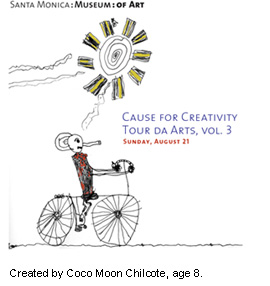 The total distance of the ride is about 7 miles. Healthy snacks and drinks donated by a variety of vendors will be provided at each stop. For something more substantial, mobile food vendors Mandolin Grille, L.A. Snowie, and Dosa Truck will be stationed at the museum to sell their gourmet concoctions.
The total distance of the ride is about 7 miles. Healthy snacks and drinks donated by a variety of vendors will be provided at each stop. For something more substantial, mobile food vendors Mandolin Grille, L.A. Snowie, and Dosa Truck will be stationed at the museum to sell their gourmet concoctions.
The event, the third of its kind, is the latest collaboration between Santa Monica Museum of Art and Cyclists Inciting Change thru Live Exchange (CICLE), which manages ride logistics to ensure the safety of the group. Last year’s “Tour da Arts” attracted about 400 riders. Elizabeth Pezza, the museum’s assistant director of communications, says that she expects even more this time around.
“It’s one of the largest organized rides on the Westside, and it’s the only one I know of that has organized events at each stop,” Pezza said.
Asuka Hisa, the event organizer and the museum’s director of education, first conceived of bringing people together in this way four years ago, when she was “feeling the cycling vibe in the city of L.A.” The event became part of the museum’s “Cause for Creativity” program, which aims to raise social awareness through engagement with the arts. Hisa relied on previous work experience in planning the event.
“I drew on my experience being an arts commissioner with the City of Santa Monica,” she said. “This was a great way to broaden the audience and engage the residents in the rich cultural resources of the city. It’s been so beneficial for everybody.”
The museum also got the public involved in creating signature graphics for the event, requesting submissions from kids for a “Bike Critter Art Contest” in July. Word of the contest spread quickly on Facebook and Twitter, and hundreds of submissions came from as far away as China and South America. A jury of artists made the final call, choosing a mouse-like creature by 8-year-old Coco Moon Chilcote of Philo, CA.
And the creativity isn’t limited to the artists. Some of the participating cyclists are expected to arrive in costume atop wacky custom rides.
The tour takes place this Sunday, August 21. Online registration is highly recommended if you want to join in. Directions to the museum and further details about the event (there are some basic safety requirements) can be found on its website. And if you want to see what last year’s ride was like, check out this video.
Posted 8/18/11
Good start for new L.A. River project
July 13, 2011
 Weedy and industrial, the concrete channel near the football field at Canoga Park High School scarcely looks like a notable site.
Weedy and industrial, the concrete channel near the football field at Canoga Park High School scarcely looks like a notable site.
But the spot where Calabasas Creek meets Bell Creek—be it ever so humble—is actually a landmark: the beginning of the Los Angeles River. And this week, it came a big step closer to getting the kind of makeover that would allow it to finally shine.
The Board of Supervisors accepted a $1.97 million state grant to help launch construction of the Los Angeles River Headwaters Project, which eventually will create more than a mile of recreational trails at the point where the storied urban river starts near Canoga Park High School in the San Fernando Valley.
Tentatively scheduled for completion in 2013, the Headwaters Project is part of a larger plan to reclaim and revitalize the river, which runs for some 50 miles through 13 cities, including Los Angeles, before it empties into the ocean at Long Beach. (Click here for an artist’s rendering of the project.)
The grant, authorized under the Proposition 84 state park program and awarded by the California Natural Resources Agency, will be a substantial down-payment on the headwaters improvement, which is expected to add some $9.3 million worth of pedestrian paths, landscaping, signage, water quality improvements and decorative fencing to an area now closed to the public and mostly used for flood control and maintenance.
Officials from the county Department of Public Works say it is the first of several grants for which they’ve applied in the hope of mitigating the cost of the project. And, they note, the City of Los Angeles has applied for an additional Metropolitan Transportation Authority grant to add a bike path to the area.
“Right now, it doesn’t look like a place anyone would want to visit,” says Terri Grant, principal engineer for the county Department of Public Works.
“But when it’s done, it will enhance the community, and draw people to a new area of open space where they can enjoy themselves and relax.”
Posted 7/13/11




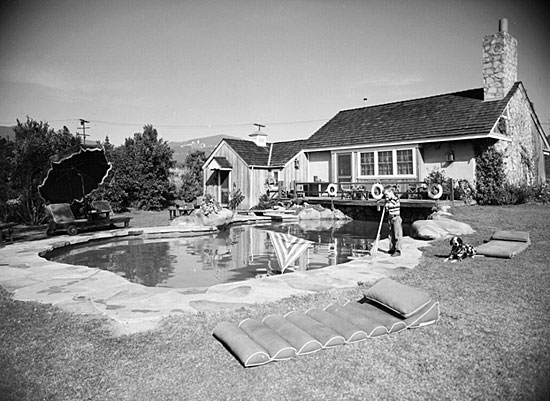
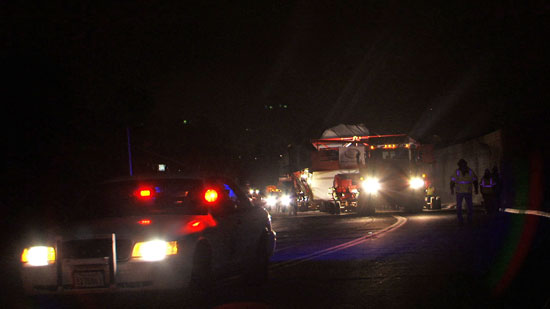
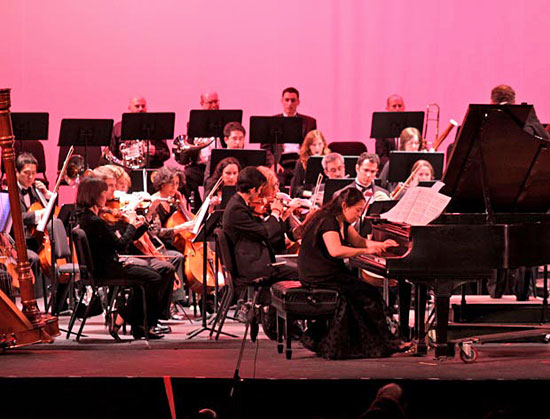

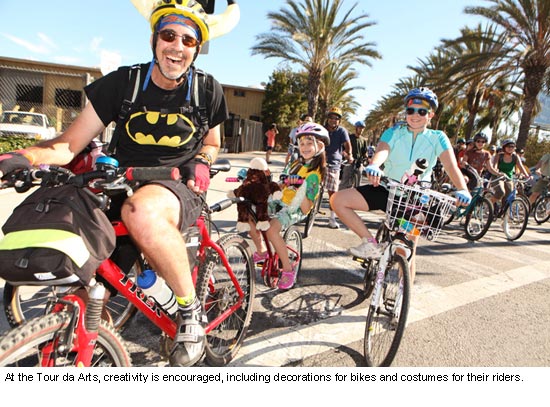







 405 bridge work causes a stink
405 bridge work causes a stink

